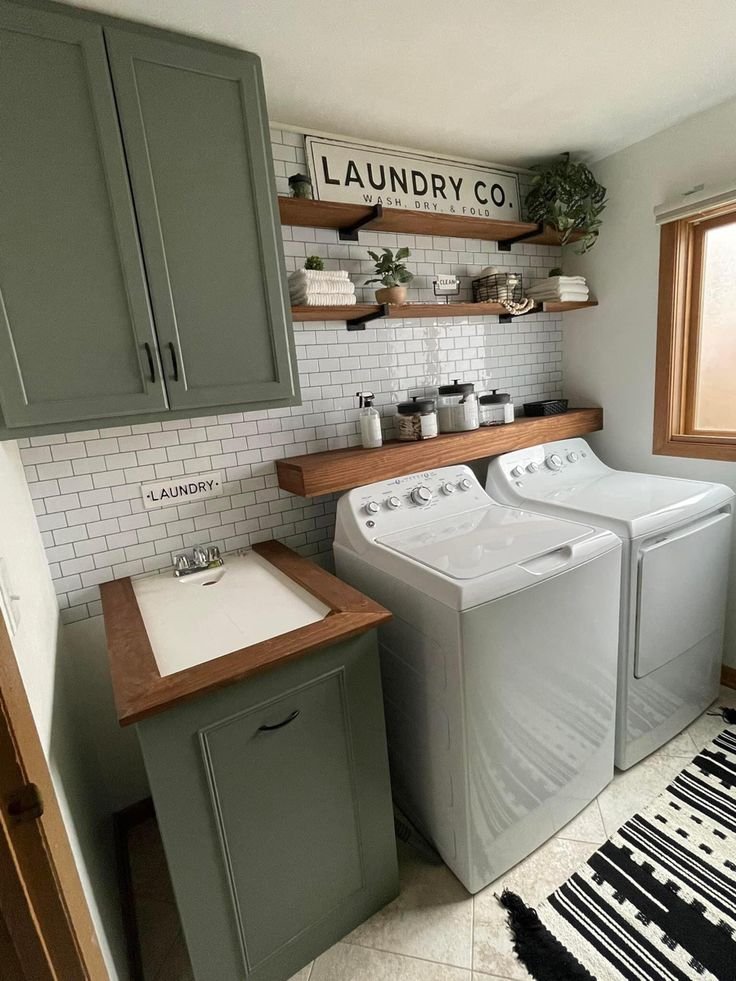The Top-Loader Laundry Room: Pros and Cons
RH Business Marketing Solutions
Introduction
When it comes to setting up a laundry room, one of the primary decisions you'll need to make is whether to go for a top-loading or front-loading washing machine. Each option has its own set of advantages and disadvantages. In this article, we'll focus on the top-loader laundry room, exploring its pros and cons to help you make an informed choice for your home.
Source: craftcuts.com
Pros of a Top-Loader Laundry Room
1. Accessibility and Ease of Use:
Top-loading washing machines are known for their user-friendly design. They are generally easier to load and unload, making them an excellent choice for people with mobility issues. You won't have to bend as much to access the drum, which can be a significant advantage for those who may have difficulty kneeling or bending.
Source: Pinterest.com
2. Quick Loading and Unloading: In a busy household, speed matters. Top-loaders typically have larger openings, allowing for quick loading and unloading of laundry. This can save you time and energy on laundry day, as you won't need to spend as much time fussing with the laundry.
Source: Pinterest.com
3. Fewer Maintenance Requirements: Front-loading machines often require more maintenance to prevent mold and mildew growth around the rubber gasket. Top-loaders, on the other hand, are less prone to these issues, making them easier to maintain. Additionally, their design reduces the likelihood of unpleasant odors in your laundry room.
Source: Pinterest.com
4. Durability: Top-loading washing machines are known for their durability and longevity. The design of the agitator and drum tends to experience less wear and tear compared to front-loading machines. This can result in a more extended lifespan for your appliance.
Source: Pinterest.com
5. Affordability: Top-loaders are often more budget-friendly than their front-loading counterparts. If you're looking to save money upfront, a top-loader might be the right choice for you. They also tend to have lower repair costs in the long run.
Cons of a Top-Loader Laundry Room
Source: Pinterest.com
1. Water and Energy Consumption:
Top-loaders generally use more water and energy per cycle than front-loading machines. This means they may not be as environmentally friendly or cost-effective in the long run, particularly if you do a lot of laundry.
Source: Pinterest.com
2. Limited Capacity: The agitator in a top-loading washing machine can take up significant space in the drum, reducing its capacity. This might not be ideal for larger households with substantial laundry needs.
Source: Pinterest.com
3. Less Efficient Cleaning: Front-loading machines are often considered more effective at cleaning clothes, as they utilize gravity to tumble clothes through a shallow pool of water. Top-loaders rely on agitators to clean the laundry, which can be harsher on delicate fabrics and potentially result in less effective cleaning.
Source: Pinterest.com
4. Noise and Vibration: Top-loading washing machines tend to be noisier and produce more vibrations during the spin cycle. This might be a drawback if your laundry room is close to a living space, or if you prefer a quieter environment.
Source: Pinterest.com
5. Incompatibility with Some Laundry Room Layouts: The top-loading design requires extra clearance above the machine to open the lid fully, which may not be suitable for all laundry room layouts. Ensure you have enough space for the lid to open without obstructions.
Conclusion
The choice between a top-loader laundry room and a front-loader ultimately depends on your specific needs and preferences. Top-loading washing machines offer ease of use, durability, and accessibility, which can make them a great choice for some households. However, they may consume more water and energy, have a smaller capacity, and be noisier compared to front-loading machines. To make the best decision for your laundry room, consider your laundry habits, available space, and long-term goals for energy efficiency and environmental impact.









